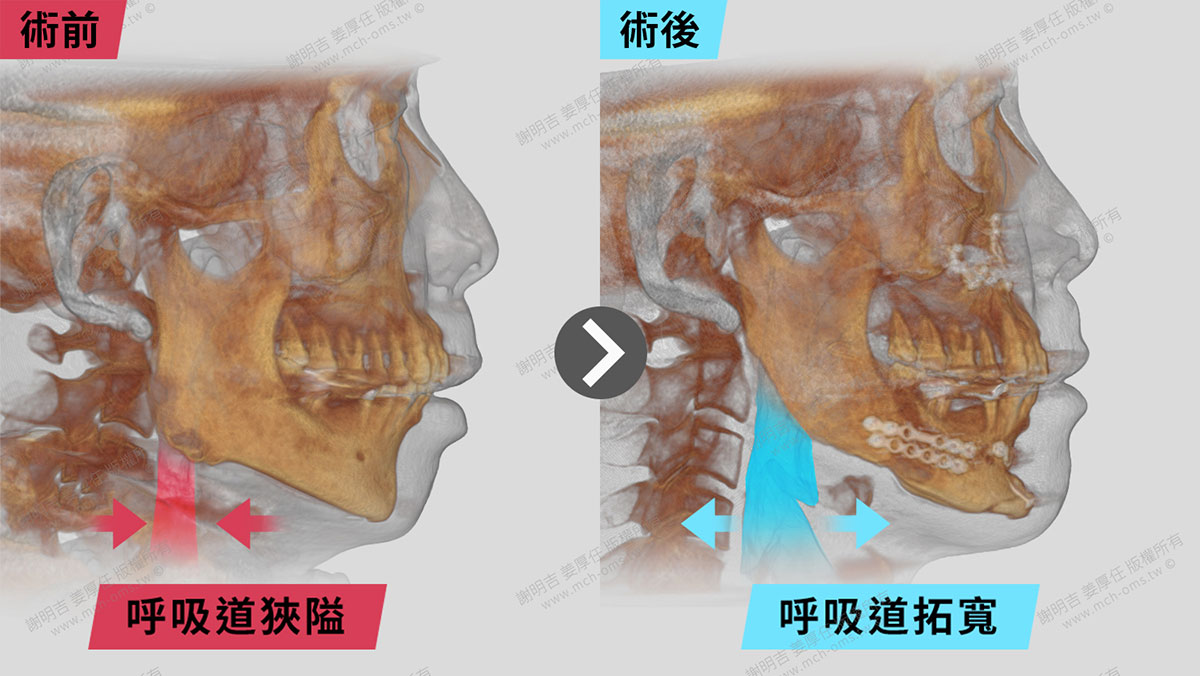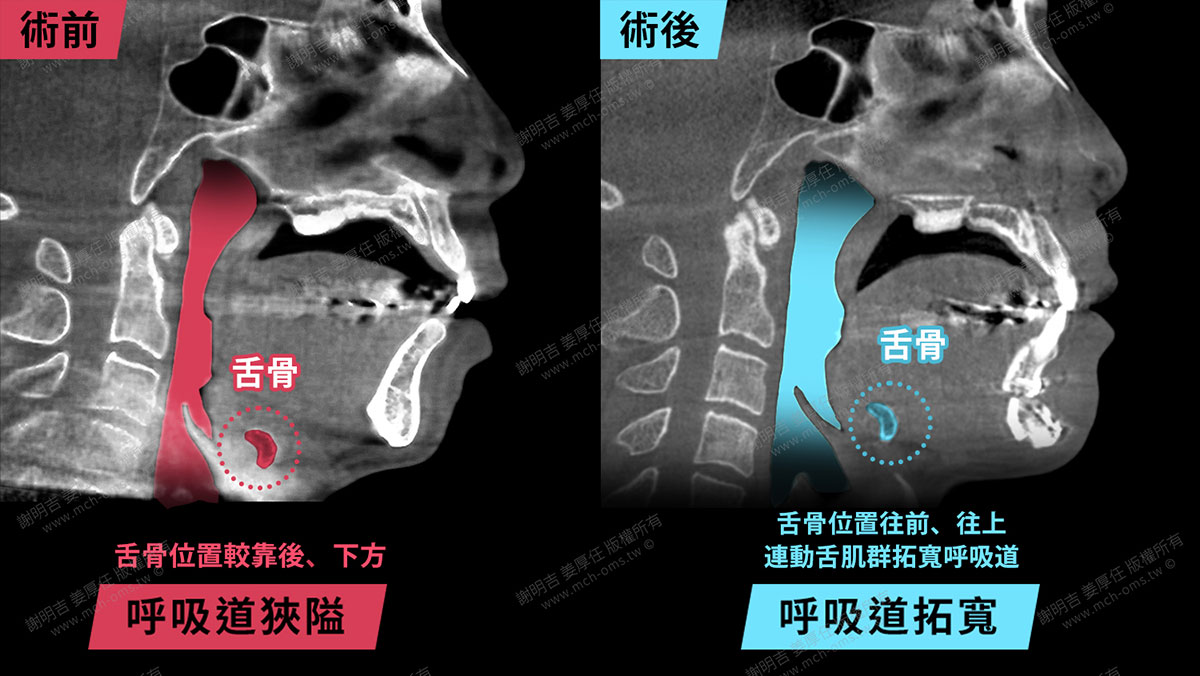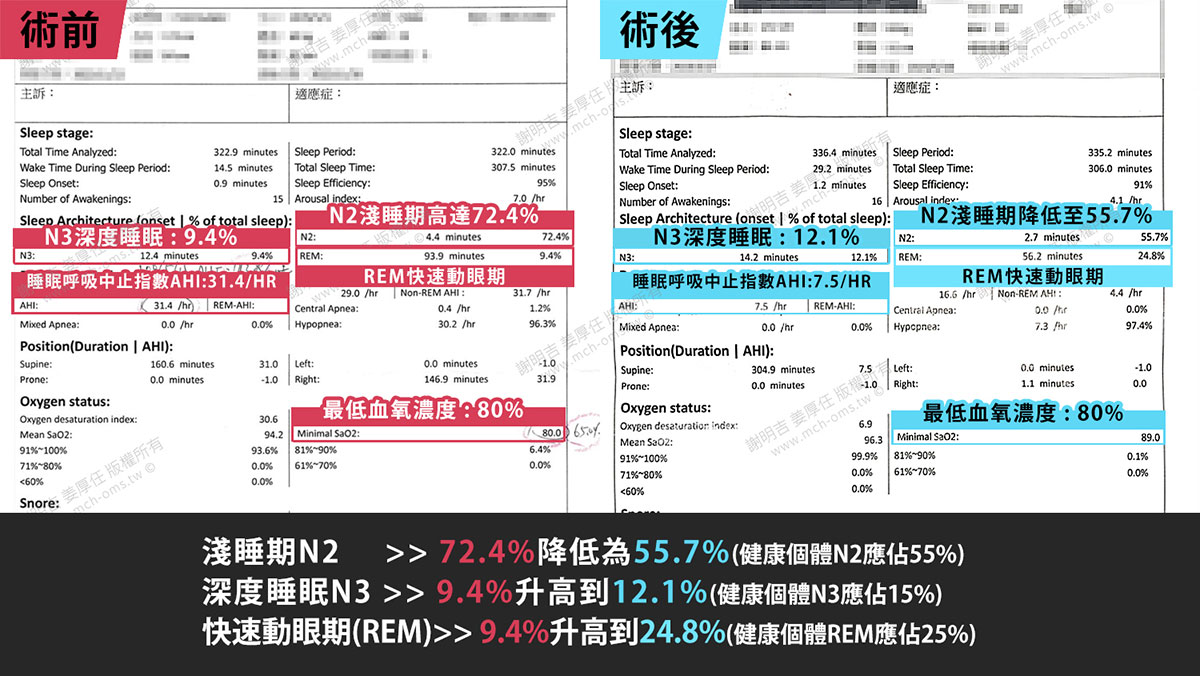| Preoperative symptoms | surgical plan |
| SevereClinical symptoms include sleep apnea, bad mood, memory loss and cognitive dysfunction. | Orthognathic surgery to widen the airway |
A very sleepy patient came to see a doctor with a sleep report. The report showed that he had severe sleep apnea (AHI = 31.4 /hr). Due to the long-term lack of rapid eye movement (REM) sleep, he also developed clinical symptoms such as bad mood, memory deterioration and cognitive dysfunction.
Over the years, he has tried positive pressure breathing machines and anti-snoring mouthpieces, but in recent years he has become increasingly unable to adapt to them. He would remove these breathing aids during sleep, which naturally had no therapeutic effect.
So he hopes to seek a more radical surgical treatment. We performed Maxillo-Mandibular Advancement (MMA) to widen his airway. From the CT scan, we can see that the location of the obstruction (the suspensory part and the tongue root) was well opened and widened, and the position of the hyoid bone was obviously lifted upward and forward.
The postoperative sleep report showed that the sleep apnea index (AHI) dropped from 31.4/hr to 7.5/hr, the minimum blood oxygen concentration increased from 80% to 89%, and the sleep structure was closer to that of healthy individuals. In principle, the treatment goal should be to reduce light sleep N2 and increase deep sleep N3 and the proportion of rapid eye movement (REM). Light sleep N2 dropped from 72.4% to 55.7% (N2 of a healthy individual should account for 55%), deep sleep N3 increased from 9.4% to 12.1% (N3 of a healthy individual should account for 15%), and most importantly, rapid eye movement (REM) increased from 9.4% to 24.8% (REM of a healthy individual should account for 25%).
Because of the increase in deep sleep, the patient felt more well-rested and recharged after the operation, his mood was more positive, and he had more energy in life and work.
A very drowsy patient came to us with his sleep report, which showed that he had severe obstructive sleep apnea (AHI = 31.4/hr). Due to prolonged lack of rapid eye movement (REM) sleep, he also exhibited clinical symptoms such as poor mood, memory decline, and cognitive dysfunction.
Over the years, he had tried using positive airway pressure device (CPAP) and oral appliance. In recent years, however, he has found it increasingly difficult to adapt to these devices, often removing them during sleep, resulting in ineffective treatment.
He decided to seek a more radical surgical treatment.We performed a Maxillo-Mandibular Advancement (MMA) surgery designed to enlarge and stabilize his airway from collapsing during sleep. The CT scan showed the sites of the obstruction (uvula and tongue base), and we achieved a good opening and widening of the airway. The hyoid bone was significantly lifted upward and pulled forward from the advanced lower jaw.
Post-operative sleep reports showed that the apnea-hypopnea index (AHI) decreased from 31.4/hr to 7.5/hr, the minimum blood oxygen saturation increased from 80% to 89%, and the sleep structure became much closer to that of healthy individuals. Our aim was to decrease the proportion of light sleep (N2) while to increase the amount of deep sleep (N3) and REM sleep. According to the post-op sleep report, the light sleep N2 decreased from 72.4% to 55.7% (N2 should account for only 55% in healthy individuals), deep sleep N3 increased from 9.4% to 12.1% (N3 should account for 15% in healthy individuals), and most importantly, the REM sleep stage increased from 9.4% to 24.8% (REM should account for 25% in healthy individuals).
Due to the increase in deep sleep, the patient felt more refreshed and energized after the surgery, with a more positive mood and more vitality in life and work.
Before and after surgery


Changes of index before and after surgery






